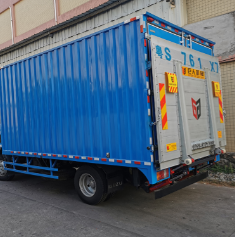Installing the tailboard of a truck will have a certain impact on the structure of the truck itself, but these impacts can be controlled through reasonable installation and appropriate measures.
From the perspective of load-bearing capacity, the tailboard of the truck itself has a certain weight, and installation will increase the overall load of the truck. This means that the chassis, suspension, and tires of the truck are subjected to increased pressure. For example, for light trucks, if the tailboard is too heavy, it may cause the vehicle's center of gravity to shift backwards, affecting the stability of the vehicle's movement. At the same time, long-term bearing of additional tailboard weight will accelerate the wear of suspension system components and shorten their service life.

In the body connection part, installing the tailboard requires drilling, welding, or bolt connection operations at the rear of the truck. If these operations are not handled properly, they may weaken the strength of the truck body structure. For example, excessive drilling may damage the original structural integrity of the truck carriage, making it more susceptible to deformation when subjected to external impacts. However, if it is a professional installation, the installer will choose the appropriate connection position and method according to the structural characteristics of the vehicle and the installation requirements of the tailboard, in order to minimize damage to the body structure.
In addition, considering the power and fuel consumption of the vehicle, due to the increased weight of the tailgate, the truck engine needs to consume more energy to drive the vehicle, which leads to an increase in fuel consumption. Moreover, the additional weight during vehicle operation may also affect the acceleration and braking performance of the vehicle.
However, in order to reduce these adverse effects, modern tailboards will take many measures in the design and installation process. For example, some high-quality tailboards use lightweight but high-strength materials such as aluminum alloy to reduce the burden of weight on trucks. In terms of installation, the installation personnel will adopt specialized reinforcement and adaptation measures according to the model and body structure of the truck. For example, strengthening the installation position, adding additional support structures, ensuring a tight fit between the tailboard and the truck body, and evenly sharing the weight.
In general, installing a truck tailboard will have an impact on the structure of the truck itself, but through reasonable design, standardized installation, and appropriate maintenance, these impacts can be effectively reduced, so that the tailboard can play a convenient role in loading and unloading without causing serious damage to the safety and service life of the truck.

Professional to provide security
for modern logistics
A new company that efficiently handles
and unloads equipment
Please do not hesitate to contact us
0769-81251088

Add friend consultation